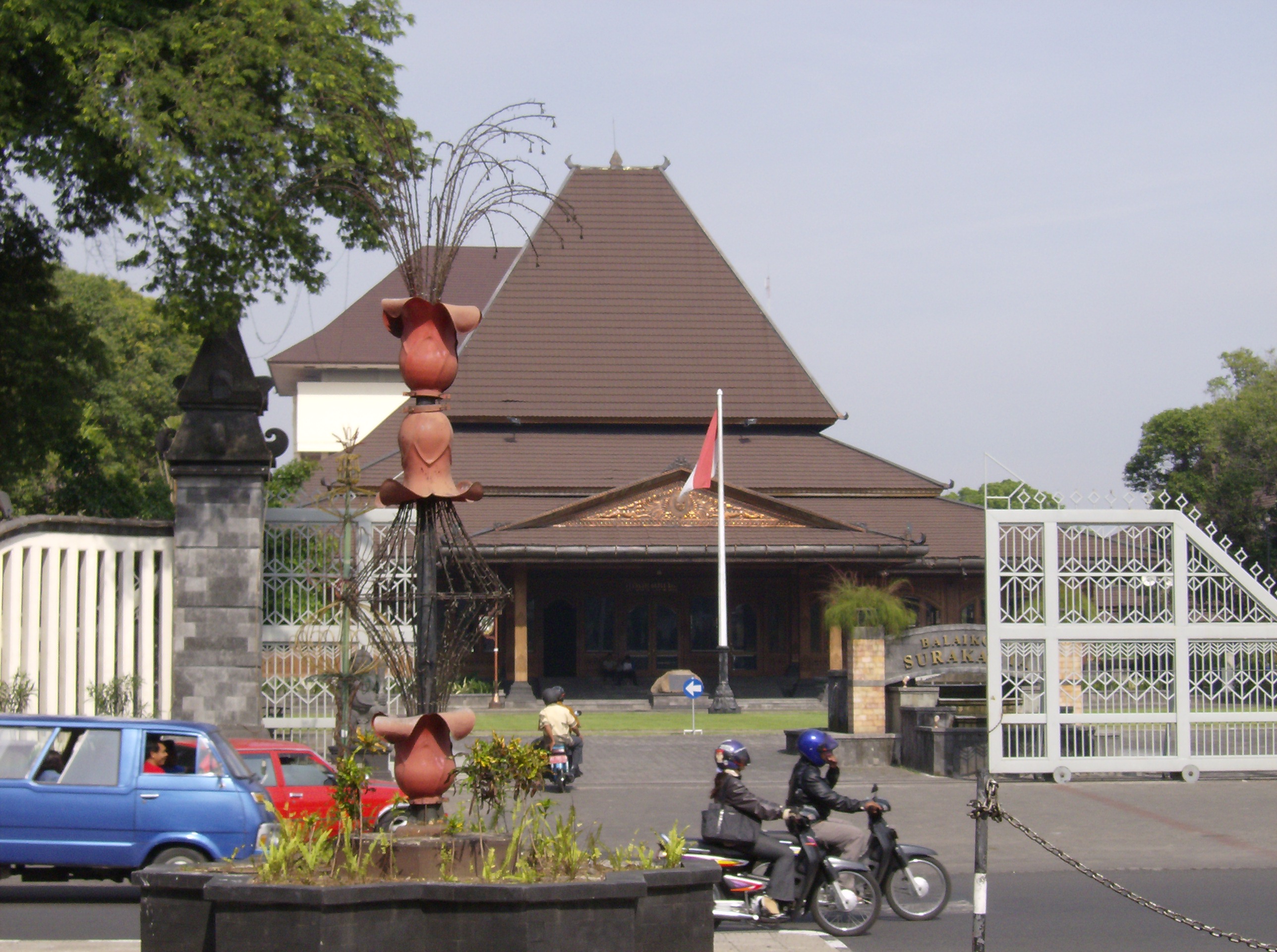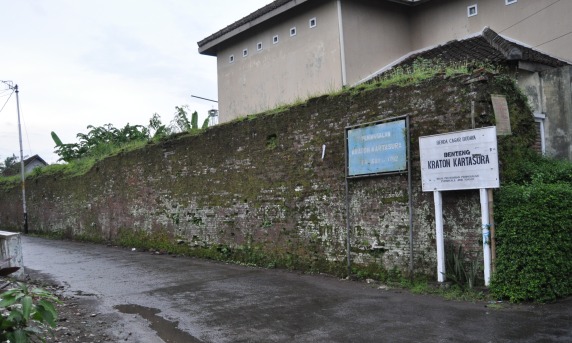|
Kota Gede
Kotagede () is a city district (''kemantren'') and a historic neighborhood in Yogyakarta, Special Region of Yogyakarta, Indonesia. Kotagede contains the remains of the first capital of Mataram Sultanate, established in the 16th century. Some of the remains of the old Kotagede are remains of the palace, the royal cemetery, the royal mosque, and defensive walls and moats. Kotagede is well known internationally for its silver crafting. History Royal city and pilgrimages Kotagede was previously a forest named Mentaok, to the east of Gajah Wong River. During the last quarter of the 16th century, the ruler of the Islamic Kingdom of Pajang, about 100 kilometers to the east of this site, awarded the forest to Ki Ageng Pemanahan, one of his courtiers who successfully put down a rebellion. Pemanahan opened the forest with his son Danang Sutawijaya, who was also an adoptive son of the ruler. A settlement was established and was named Mataram as Pemanahan himself was called Ki Gedhe Mataram ... [...More Info...] [...Related Items...] OR: [Wikipedia] [Google] [Baidu] |
List Of Districts Of The Special Region Of Yogyakarta
The province of Yogyakarta Special Region in Indonesia is divided into 1 city and 4 regencies which in turn are divided administratively into ''kapanewon'' or ''kemantren'' (districts A district is a type of administrative division that in some countries is managed by the local government. Across the world, areas known as "districts" vary greatly in size, spanning regions or counties, several municipalities, subdivisions ...). A ''Kapanewon'' (a subdivision of a regency) is headed by a ''panewu'', while a ''kemantren'' (a subdivision of the city), is headed by a ''mantri pamong praja''. These terms replaced the term ''kecamatan'' in 2020. The districts of Yogyakarta Special Region with the regency it falls into are as follows: * Bambanglipuro, Bantul * Banguntapan, Bantul * Bantul, Bantul * Berbah, Sleman * Cangkringan, Sleman * Danurejan, Yogyakarta * Depok, Sleman * Dlingo, Bantul * Galur, Kulon Progo * Gamping, Sleman * Gedangsari, Gunung Kidul * Gedongtengen, Yogyak ... [...More Info...] [...Related Items...] OR: [Wikipedia] [Google] [Baidu] |
Surakarta
Surakarta (Javanese script, Javanese: , Pegon script, Pegon: ), known colloquially as Solo (Javanese script, Javanese: ; ), is a major List of regencies and cities of Indonesia, city in Central Java, Indonesia. The city adjoins Karanganyar Regency and Boyolali Regency to the north, Karanganyar Regency and Sukoharjo Regency to the east and west, and Sukoharjo Regency to the south. On the eastern side of Solo lies Solo River (Bengawan Solo). Its metropolitan area, consisting of Surakarta City and the surrounding six regencies ("Greater Solo Area", formerly Special Region of Surakarta), was home to 6,837,753 inhabitants according to the official estimates for mid 2023, 526,870 of whom reside in the city proper. Surakarta is the birthplace of the President of Indonesia from 2014 to 2024, Joko Widodo, as well as his son and current Vice President of Indonesia, Gibran Rakabuming Raka. The former served as Mayor of Surakarta from 2005 to 2012, as did the latter from 2021 to 2024. His ... [...More Info...] [...Related Items...] OR: [Wikipedia] [Google] [Baidu] |
Pakubuwono II
Pakubuwono II (also transliterated Pakubuwana II) (1711–1749) was the ruler of Mataram. His correct title in Javanese etiquette standards contains honorific appellations, some of which each successive ruler inherits. The move of his court from Kartasura to Surakarta was to avert the calamities that occurred at the former palace.Ricklefs, M.C. (1998) ''The seen and unseen worlds in Java, 1726–49: History, literature and Islam in the court of Pakubuwana II''. St. Leonards NSW: The Asian Studies Association of Australia in association with Allen and Unwin; Honolulu : The University of Hawai'i Press. References Burials at Imogiri Susuhunan of Surakarta 1711 births 1749 deaths Sultans of Mataram 18th-century Indonesian people Sons of monarchs {{Indonesia-bio-stub ... [...More Info...] [...Related Items...] OR: [Wikipedia] [Google] [Baidu] |
Raden Mas Garendi
is a Japanese termRaden. for one of the decorative techniques used in traditional crafts and woodwork. It refers to a method of inserting into a carved surface of lacquer or wood. The for means 'shell' and means 'inlaid'. is a term used only for the technique or work of inlaying thin layers of pearl shells. In Japan, the technique of embedding the mother of pearl of shellfish in lacquer is called , while the technique ... [...More Info...] [...Related Items...] OR: [Wikipedia] [Google] [Baidu] |
1740 Batavia Massacre
The 1740 Batavia massacre (; ) was a massacre and pogrom of ethnic Chinese residents of the port city of Batavia, Dutch East Indies, (present-day Jakarta) in the Dutch East Indies. It was carried out by European soldiers of the Dutch East India Company and allied members of other Batavian ethnic groups. The violence in the city lasted from 9 October 1740, until 22 October, with minor skirmishes outside the walls continuing late into November that year. Historians have estimated that at least 10,000 ethnic Chinese were massacred; just 600 to 3,000 are believed to have survived. In September 1740, as unrest rose among the Chinese population, spurred by government repression and declining sugar prices, Governor-General Adriaan Valckenier declared that any uprising would be met with deadly force. On 7 October, hundreds of ethnic Chinese, many of them sugar mill workers, killed 50 Dutch soldiers, leading Dutch troops to confiscate all weapons from the Chinese populace and to ... [...More Info...] [...Related Items...] OR: [Wikipedia] [Google] [Baidu] |
Kartosuro
Kartasura (, also spelled Kartosuro) is a district ''(kecamatan)'' in Sukoharjo Regency, Central Java, Indonesia. Kartasura is considered Surakarta's satellite city and a junction of highways to Yogyakarta and Semarang. It can be reached within minutes southward of Surakarta's Adisumarmo International Airport. History In the seventeenth century Kartasura was the capital of the Sultanate of Mataram between 1680 and 1755. This time period is commonly referred to as the Kartasura era or period of the Mataram sultanate—it preceded the transfer to Surakarta by Pakubuwana II. There were considerable problems for the sultanate in this era: * A difficult relationship with the Dutch East India Company The United East India Company ( ; VOC ), commonly known as the Dutch East India Company, was a chartered company, chartered trading company and one of the first joint-stock companies in the world. Established on 20 March 1602 by the States Ge ... (VOC) * The issues of succes ... [...More Info...] [...Related Items...] OR: [Wikipedia] [Google] [Baidu] |
Amangkurat II Of Mataram
Amangkurat II (also known as Rahmat; died 1703) was the ''susuhunan'' of the Sultanate of Mataram from 1677 to 1703. Before taking the throne, he was the crown prince and had the title Pangeran Adipati Anom. He was the first Javanese monarch to wear a European-style uniform, thus gaining the nickname Sunan Amral, Amral rendering the meaning "admiral" in Javanese. Background Born as Raden Mas Rahmat, he was the son of Amangkurat I of Mataram and Ratu Kulon, daughter of Pangeran Pekik of Surabaya. Amangkurat II had many wife, wives, but only one child, Sutikna (later Amangkurat III of Mataram, Amangkurat III). According to the ''Babad Tanah Jawi'', Sutikna's mother had used magic on Amangkurat II's wives to make them unable to conceive. Conflict within family Rahmat was raised in Surabaya. He then moved to the Plered Palace as ''adipati anom'' (crown prince). However, his relationship with his brother, Prince Singasari, worsened. There was also news that the position of crown ... [...More Info...] [...Related Items...] OR: [Wikipedia] [Google] [Baidu] |
Amangkurat I Of Mataram
Amangkurat I (Amangkurat Agung; 1619–1677) was the ''susuhunan'' of the Mataram Sultanate from 1646 to 1677. He was the son of Sultan Agung of Mataram. He experienced many rebellions during his reign. He died in exile in 1677 and was buried in Tegalwangi (near Tegal), hence his posthumous title, Sunan Tegalwangi or Sunan Tegalarum. He was also nicknamed Sunan Getek because he was wounded when suppressing the rebellion of Raden Mas Alit, his brother. Early reign In 1645, Amangkurat was appointed as the monarch or leader (''susuhunan'') of Mataram, succeeding his father. He was then styled Susuhunan Ing Alaga. Following his coronation in 1646, he was styled Kanjeng Susuhunan Prabu Amangkurat Agung, abbreviated as Amangkurat. In Javanese, the word ''Amangku'' means "to administer", and ''Rat'' means "world", thus Amangkurat means "administering the world". He then became a king who had full power over the entire Mataram Sultanate and its vassal states. At his coronation, all roya ... [...More Info...] [...Related Items...] OR: [Wikipedia] [Google] [Baidu] |
Plered
Plered (also Pleret) was the location of the Kraton (Indonesia), palace of Amangkurat I of Mataram Sultanate, Mataram (1645–1677). Amangkurat moved the capital there from the nearby Karta Palace, Karta in 1647. During the Trunajaya rebellion, the capital was occupied and sacked by the rebels, and Amangkurat died during the retreat from the capital. His son and successor Amangkurat II later moved the capital to Kartasura. It was twice occupied by Diponegoro, during the Java War (1825–1830) between his forces and the Dutch East Indies, Dutch. The Dutch assaulted the walled complex in June 1826, which was Diponegoro's first major defeat in the war. Following the Java War, the town's decline accelerated and today it is in ruins. The remains are now located in the Bantul Regency, Special Region of Yogyakarta, Indonesia, close to the banks of the Opak River, and south of Kota Gede. It has been researched for archaeological remains It is located to the east of the site of Sultan Agun ... [...More Info...] [...Related Items...] OR: [Wikipedia] [Google] [Baidu] |
Jakarta
Jakarta (; , Betawi language, Betawi: ''Jakartè''), officially the Special Capital Region of Jakarta (; ''DKI Jakarta'') and formerly known as Batavia, Dutch East Indies, Batavia until 1949, is the capital and largest city of Indonesia and an autonomous region at the provincial level. Lying on the northwest coast of Java, the world's List of islands by population, most populous island, Jakarta is the List of cities in ASEAN by population, largest metropole in Southeast Asia and serves as the diplomatic capital of ASEAN. The Special Region has a status equivalent to that of a Provinces of Indonesia, province and is bordered by two other provinces: West Java to the south and east; and Banten to the west. Its coastline faces the Java Sea to the north, and it shares a maritime border with Lampung to the west. Jakarta metropolitan area, Jakarta's metropolitan area is List of ASEAN country subdivisions by GDP, ASEAN's second largest economy after Singapore. In 2023, the city's Gros ... [...More Info...] [...Related Items...] OR: [Wikipedia] [Google] [Baidu] |
Sultan Agung
Sultan Agung Adi Prabu Anyakrakusuma (; 1593 – 1654), commonly known as Sultan Agung, was the third Sultan of Mataram in Central Java ruling from 1613 to 1645. He was a skilled soldier who conquered neighbouring states and expanded and consolidated his kingdom to its greatest territorial and military power. ''Sultan Agung'' or ''Susuhunan Agung'' (literally, "Great Sultan" or "Majestic Sultan") is subject to a substantial amount of literature due to his legacy as a Javanese ruler, a fighter against the incursions of the Dutch East India Company, a conqueror, and his existence within a cultural framework where myth and magic are intertwined with verifiable historical events and personages. The Dutch literature wrote his name as ''Agoeng de Grote'' (literally, "Agung the Great"). For his service as a fighter and cultural observer, Sultan Agung was declared as National Hero of Indonesia on November 3, 1975. Biography Early reign Rangsang ascended to the throne when he wa ... [...More Info...] [...Related Items...] OR: [Wikipedia] [Google] [Baidu] |





